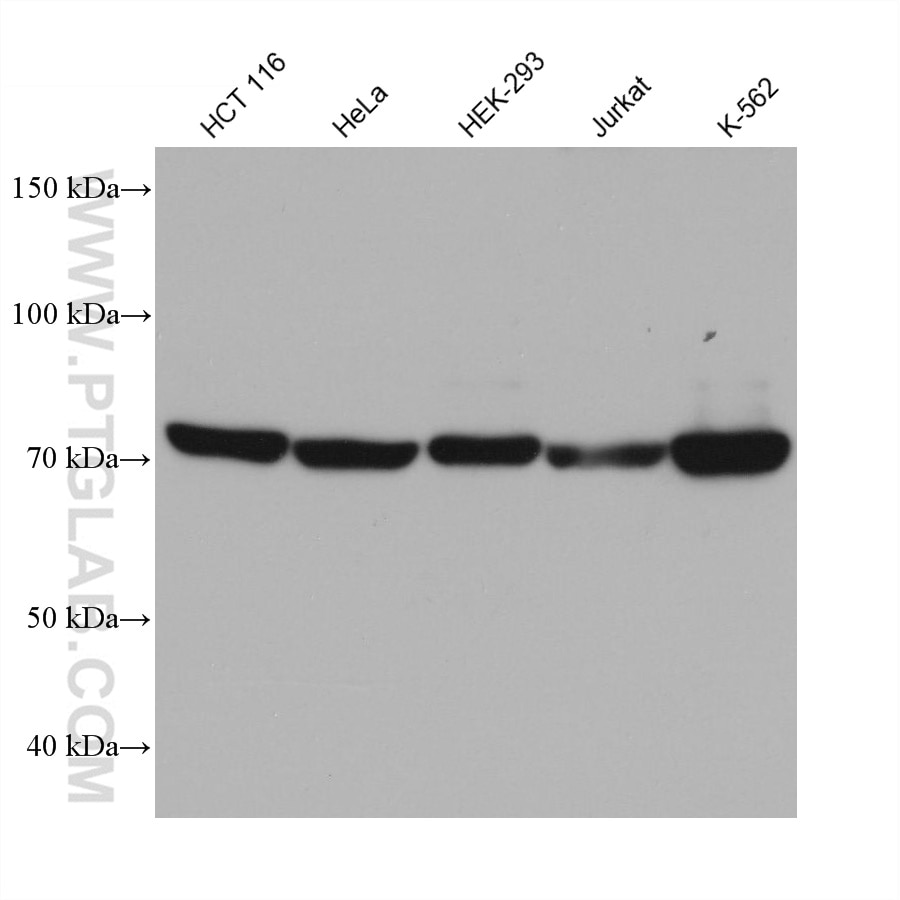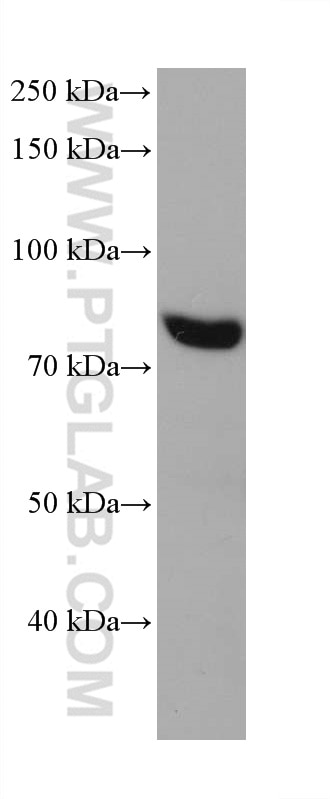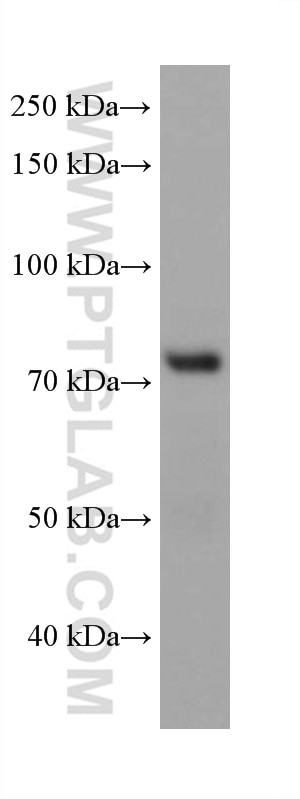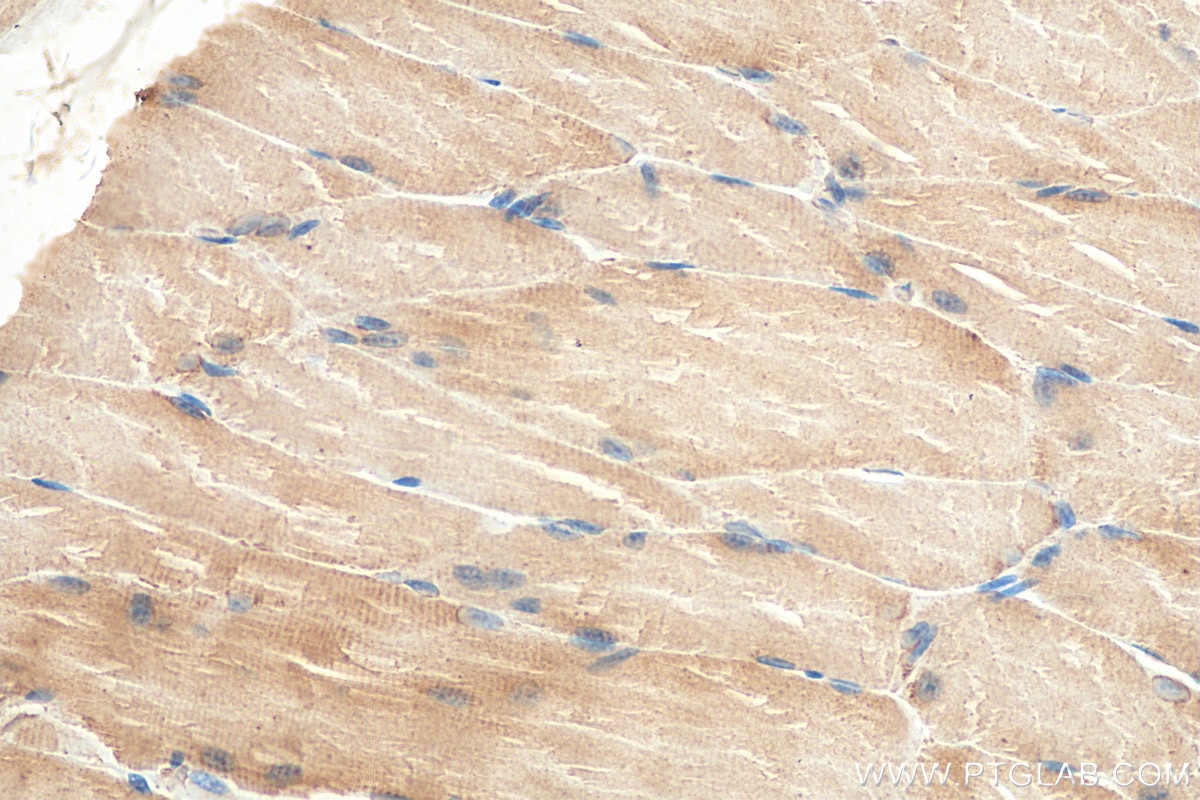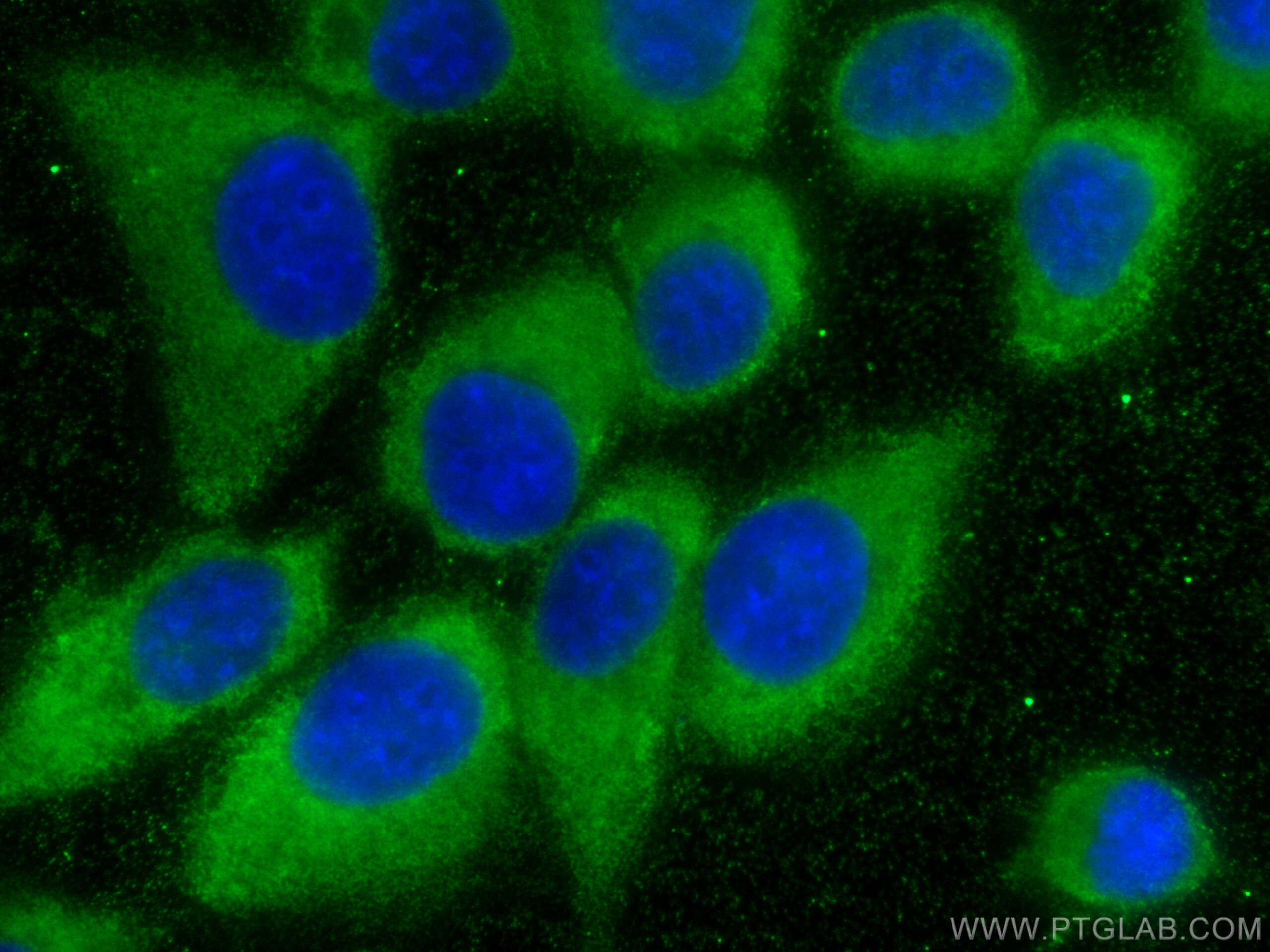Anticorps Monoclonal anti-PABPC4
PABPC4 Monoclonal Antibody for WB, IHC, IF/ICC, Indirect ELISA
Hôte / Isotype
Mouse / IgG1
Réactivité testée
Humain, rat, souris
Applications
WB, IHC, IF/ICC, Indirect ELISA
Conjugaison
Non conjugué
CloneNo.
1E6B3
N° de cat : 68187-1-PBS
Synonymes
Galerie de données de validation
Informations sur le produit
68187-1-PBS cible PABPC4 dans les applications de WB, IHC, IF/ICC, Indirect ELISA et montre une réactivité avec des échantillons Humain, rat, souris
| Réactivité | Humain, rat, souris |
| Hôte / Isotype | Mouse / IgG1 |
| Clonalité | Monoclonal |
| Type | Anticorps |
| Immunogène | PABPC4 Protéine recombinante Ag6813 |
| Nom complet | poly(A) binding protein, cytoplasmic 4 (inducible form) |
| Masse moléculaire calculée | 70 kDa |
| Poids moléculaire observé | 71 kDa |
| Numéro d’acquisition GenBank | BC065540 |
| Symbole du gène | PABPC4 |
| Identification du gène (NCBI) | 8761 |
| Conjugaison | Non conjugué |
| Forme | Liquide |
| Méthode de purification | Purification par protéine G |
| Tampon de stockage | PBS only |
| Conditions de stockage | Store at -80°C. 20ul contiennent 0,1% de BSA. |
Informations générales
Poly(A)-binding protein (PABP), a nucleocytoplasmic shuttling protein, has a fundamental role in promoting gene expression by enhancing mRNA translation and stability(PMID: 21940797). Poly(A)-binding protein 4 (PABPC4), one of the homologs of PABP, was initially identified as a human T-cell activation-induced protein. PABPC4 may also be involved in the regulation of protein translation in platelets and megakaryocytes or may participate in the binding or stabilization of polyadenylates in platelet dense granules(NCBI).
